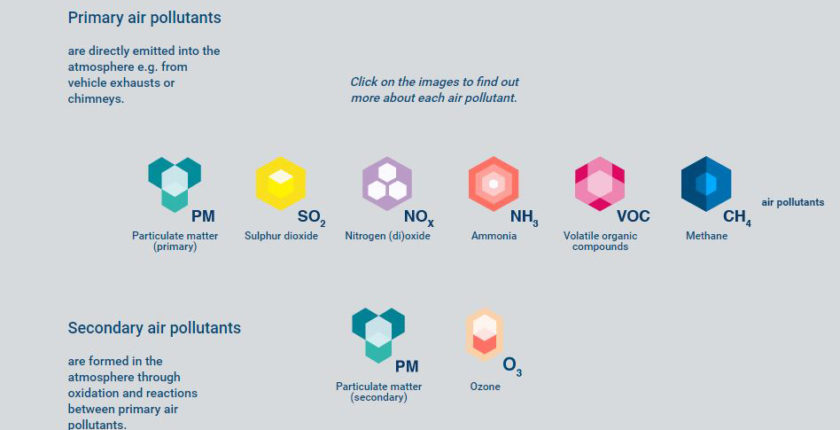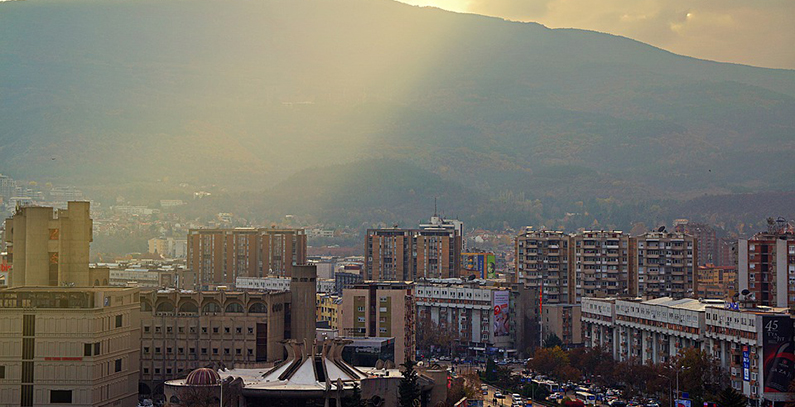
Photo: Pixabay
*Expert advice in the preparation of this article was provided by Professor Aleksandar Jovović, Faculty of Mechanical Engineering, University of Belgrade
This past winter will be remembered by unprecedented levels of air pollution in almost the entire Western Balkan region. Information provided by official institutions was in contradiction with measurements and data citizens received via online air-quality apps, which caused additional concern and mistrust in the authorities’ work and reporting.
Which particles cause air pollution? Who emits them? How does polluted air affect human health? These are the questions citizens did not get answers to. The answers provided by officials, who blamed air pollution on the weather or even on citizens themselves, citing heavy traffic and household heating, cannot be dismissed as incorrect, but they are far from being complete.
Today the world is marking the first International Day of Clean Air for blue skies, with the theme “Clean Air for All”
Today, on September 7, the world is marking the first International Day of Clean Air for blue skies, with the theme “Clean Air for All.” On the occasion of the very first International Day of Clean Air, established by the United Nations (UN), Balkan Green Energy News is launching a series of articles with the aim of demystifying the topic of air pollution and providing useful and relevant information and knowledge about this increasingly important issue.
Health concerns are the main reason for a growing demand for such information
Health concerns are the main reason for a growing demand for such information. Until recently people were almost completely uninterested in this topic, but today they want to know which pollutants are emitted into the atmosphere by coal-fired power plants, what is released into the air by automobiles, and how harmful particulates PM10 and PM2.5 are.
With that knowledge it is easier to establish who is telling the truth about the harmful effects of air pollution and understand what air-quality apps are actually saying, but also determine whether announced measures are adequate or whether they are merely cosmetic changes that will not eliminate the actual problem.
5,000 premature deaths a year
Some facts are very well known. A study of air pollution in 19 Western Balkan cities by the UN Environment Program (UNEP) has found that the total number of premature deaths attributable to air pollution is nearly 5,000 a year. Deaths from air pollution is defined as the number of individuals who died earlier (in the range of months to years) than would have been expected in the absence of air pollution.
PM 2.5 and PM 10 can get deep into the lungs and end up in the bloodstream
In the Western Balkans, daily concentrations of particulate matter PM 2.5 and PM 10 – which can get deep into the lungs and end up in the bloodstream, causing cardiovascular, cerebrovascular, and respiratory damage – are several times above the prescribed limits, which, in turn, are several times higher than the World Health Organization (WHO) guidelines.
Moreover, these daily exceedances occur on between 120 and 180 days a year, compared with the 35-day limit in the European Union (EU), according to the UNEP report.
What are the main air pollutants
- Primary and secondary particulate matter – PM
- Sulfur dioxide – SO2
- Nitrogen oxides – NOx
- Ammonia – NH3
- Volatile organic compounds – VOC
- Methane – CH4
- Ozone – O3
They are grouped into two main categories: primary pollutants, which are directly emitted into the atmosphere from chimneys, vehicle exhausts, etc. and secondary air pollutants, which are formed in the atmosphere through reactions between primary air pollutants. The primary pollutants include primary particulate matter, sulfur dioxide, nitrogen oxides, ammonia, volatile organic compounds, and methane. The secondary pollutants include secondary particulate matter and ozone.
During 2011, particulate matter PM2.5 and ozone caused the largest number of premature deaths in the EU, while PM2.5, ozone, and sulfur and nitrogen oxides are responsible for the most premature deaths in the Western Balkans.
Primary and secondary particulate matter (PM)
Particulate matter is formed in natural processes and in human activity, and it contaminates the air by forming a mixture of solid and liquid organic and inorganic particles of dust, smoke, soot, ash, pollen, and dirt, which contain very harmful sulfates, nitrates, hydrocarbons, heavy metals (mercury, cadmium, lead, arsenic), and ammonia.
These particles, which vary in size, composition, and origin, are categorized by their aerodynamic properties
These particles, which vary in size, composition, and origin, are categorized by their aerodynamic properties. These properties determine how particles are transported in the air and how they get into the respiratory system, and are also related with their chemical composition and sources.
The adverse health effects depend on the size of particles, but also on their composition and on what they adsorb
The adverse health effects depend on the size of particles, but also on their composition and on what they adsorb. The smaller the particle the larger the surface area of its absorption pores for various contaminating components, and if it picks up some heavy metals, it becomes very problematic.
There are two categories of particles that are most commonly used in air quality analyses and monitoring: particulate matter PM10, with a diameter of 10 micrometers or less, and particulate matter PM2.5, with a diameter of 2.5 micrometers or less. Humans can inhale particles of various sizes, but those of over 10 micrometers do not remain in the lungs or enter the bloodstream as they are ejected by coughing or sneezing or in some other way. To get a better picture of how small they are, try comparing them with a human hair, whose diameter is 70 micrometers.
Most experts believe that PM10, and particularly PM2.5, are the air pollutants that are the most harmful to human health
Most experts believe that PM10, and particularly PM2.5, are the air pollutants that are the most harmful to human health. They can penetrate deep into the lungs and enter the bloodstream, causing cardiovascular, cerebrovascular, and respiratory damage. They are also harmful to the environment and agricultural production.
Particulate matter can be divided into coarse and fine, and their common source is the burning of fossil fuels in thermal power plants, vehicles, industrial facilities, and households.
Coarse particles, with a diameter of more than 2.5 micrometers, including PM10 particles, are produced by the mechanical break-up of larger particles, such as dust from rocks or from other natural processes, but also from roads and agricultural and mining activities as well as from construction sites.
Fine particles, or PM2.5, are formed from gases, and they mostly include the so-called secondary suspended particulate matter
Fine particles, or PM2.5, are formed from gases, and they mostly include the so-called secondary suspended particulate matter that is produced in atmospheric reactions between sulfur oxides, nitrogen oxides, ammonia, and volatile organic compounds (VOCs). These reactions result in the creation of new particles or the condensation of these oxides, ammonia, and VOCs on existing particles.
Sulfur oxides, nitrogen oxides, and VOCs are released into the air by burning fossil fuels in industrial facilities, district heating plants, thermal power plants, as well as vehicles and households (household heating).
The mixture of ammonia and sulfur dioxide produces ammonium sulfate, while the mixture of ammonia and nitrogen oxides creates ammonium nitrate.
The harmfulness of the combustion of coal, oil, and oil products is demonstrated by the fact that it can simultaneously produce coarse particulate matter, such as ash, fine particulate matter, which is formed through the condensation of vapors, and secondary particles of sulfur oxides and nitrogen oxides.
Sulfur dioxide (SO2)

Sulfur dioxide is a colorless gas with a sour taste and pungent smell. It is formed by the combustion of fossil fuels rich in sulfur, such as natural gas, coal, lignite, or fuel oil.
Nearly all of the sulfur from coal burned at thermal power plants is emitted into the air as sulfur dioxide.
Around 95% of the sulfur contained in these fuels ends up in sulfur dioxide, while the rest produces sulfur trioxide and sulfate particles. Nearly all of the sulfur from coal burned at thermal power plants is emitted into the air as sulfur dioxide.
The health effects of sulfur dioxide include weakness, cough, bronchitis, impaired lung function, and the aggravation of existing respiratory and cardiovascular diseases.
Sulfur dioxide reacts with water vapor to create sulfuric acid, which is considered the main source of acid rain
Sulfur dioxide reacts with water vapor to create sulfuric acid, which is considered the main source of acid rain. Sulfur dioxide is a constituent of smog, and it can also find its way into snow and fog. Sulfuric acid has an adverse impact on plants, as well as entire ecosystems.
Also, sulfur oxides are among the main sources of fine particulate matter PM2.5 and smog.
Nitrogen oxides (NOx)
A group of six gases, of which nitrogen dioxide (NO2) is the one most commonly found in the air. Nitrogen dioxide is formed in the reaction between nitrogen oxide, a product of the combustion of hydrocarbons, primarily oil and gas, and the oxygen in the air. The biggest emitters are internal combustion engines in vehicles, ships, construction machines, as well as power plants and industry – steel mills, cement plants, oil refineries, and glassworks facilities.
Nitrogen oxides are responsible for the formation of particulate matter PM2.5 as well as the tropospheric, “bad” ozone
Nitrogen oxides have an irritating effect on the respiratory mucosa, causing respiratory diseases, as well as cancer, and not only lung cancer.
They are also one of the sources of acid rain, which harms human health, destroys forests, and damages buildings.
Nitrogen oxides are responsible for the formation of particulate matter PM2.5 as well as the tropospheric, “bad” ozone, and therefore smog.
Ammonia (HN3)

Ammonia is a toxic, colorless gas with a pungent smell. Its main source is agriculture, where it is formed by the dissolution of manure and the use of synthetic fertilizers.
Once it gets into the air, it quickly combines with nitrogen oxides and sulfur oxides to produce ammonium nitrates and ammonium sulfates, which form part of fine particulate matter PM2.5.
Ammonia irritates eyes and the respiratory tract.
Volatile Organic Compounds (VOC)
VOCs are gases and vapors that are emitted into the air from products or processes. The most familiar ones include benzene, toluene, ethylbenzene, and xylene. These compounds contain carbon and can quickly turn into vapors or gases.
They are ingredients in a large number of everyday products
They are ingredients in a large number of everyday products: solvents, adhesives, dry-cleaning products, paints, varnishes, air fresheners, pesticides, floors, carpets, cosmetics, and deodorants, but they also come from the combustion of oil products in vehicles, wood burning, and oil and gas extraction and processing.
Just like sulfuric oxides and ammonia, these compounds are also responsible for the formation of particulate matter PM2.5.
In humans, they cause the irritation of the upper airways, breathing difficulties, and dizziness, and they can also damage the central nervous system and other organs. Some of these compounds can cause cancer.
Methane (CH4)
Methane is an air pollutant and a greenhouse gas. In a series of chemical reactions, methane, along with nitrogen oxides, produces the harmful ozone. The major sources of methane are the energy sector, landfills, and agriculture (mainly livestock).
Ozone (O3)

Ozone, along with secondary particulate matter, belongs to the group of secondary air pollutants.
Ozone is found in both the upper and lower atmosphere, and is called either the “good” or the “bad” ozone. In the upper atmosphere, ozone occurs naturally and shields the planet from the Sun’s harmful ultraviolet radiation. It is well known that this layer of ozone has holes as a consequence of harmful emissions from human activity. However, with the implementation of the Montreal Protocol and the phasing out of numerous substances, these holes have begun to shrink.
It is formed in reactions between nitrogen oxides, volatile organic compounds, methane which ended up in the air due the combustion of fossil fuels
The ground-level ozone, also known as tropospheric ozone, is formed in reactions between nitrogen oxides, volatile organic compounds, methane which ended up in the air due the combustion of fossil fuels – in the presence of sunlight. Concentrations of ozone are commonly higher on sunny days, and it can also be transported long distances by wind.
Ozone is the main constituent of smog.
Inhaling it can cause cough, chest pain, respiratory tract inflammations, impaired lung function, damage to lung tissue, and the aggravation of bronchitis, emphysema, and asthma.
Carbon dioxide (CO2)
Carbon dioxide, or CO2, is perhaps the most talked about topic when it comes to emissions, but this gas actually does not pollute the air.
Rather, increased emissions of greenhouse gases, which include CO2, cause global warming. Along with nitrogen and oxygen, these gases (including water vapor, carbon dioxide, methane, nitrogen oxides, ozone, and other gases) are normally present in the atmosphere, helping keep the temperature of the planet’s surface 30°C higher than it would have been, and thus enabling life on Earth.
However, since the beginning of the industrial revolution, their concentrations have increased significantly as a consequence of human activity. Emissions of CO2 have seen a particularly high increase due to the burning of fossil fuels and deforestation, but there has been a sharp rise in methane emissions as well, due to the development of agriculture.


















Be the first one to comment on this article.